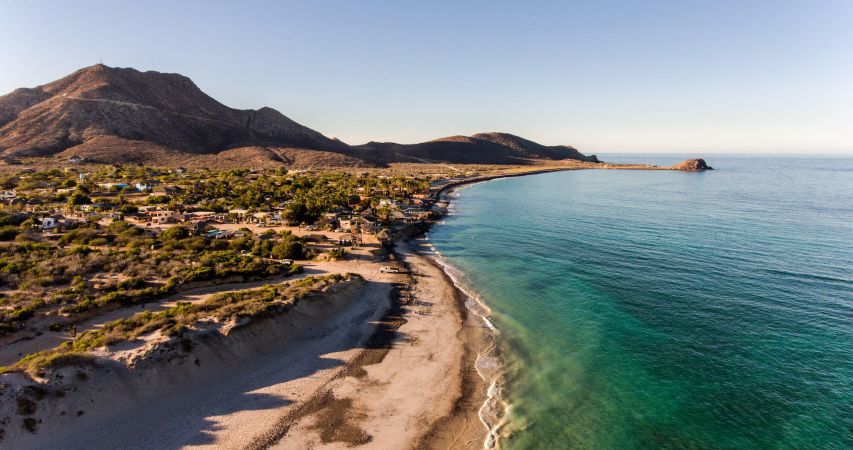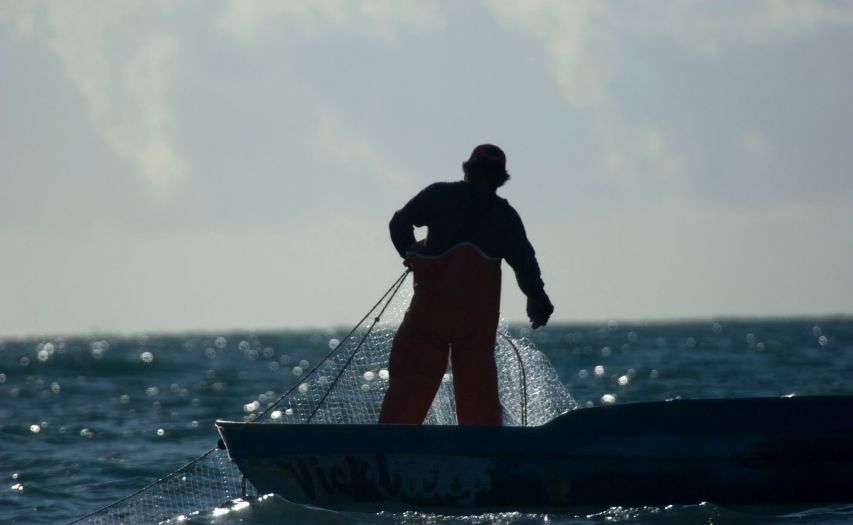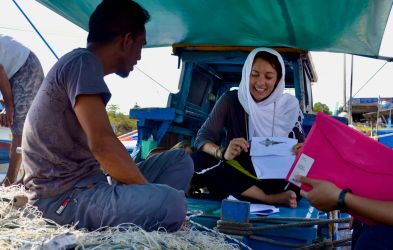
Thanks to grassroots action and community efforts, a once devastated reef in Mexico has become a UNESCO World Heritage Site. Now teeming with marine wildlife, Cabo Pulmo has become a world-renowned shark diving destination especially popular for its bull sharks. But how did that happen?
Cabo Pulmo is a jewel on Mexico’s Baja California peninsula, a UNESCO World Heritage site blessed with clear turquoise waters and the only coral reef system in the Gulf of California. It’s a major tourism drawcard, featuring some of the best diving, snorkelling, and shark sightings in the region. Of the sharks, four key species are found here: lemon shark; bull shark; blacktip shark; and tiger shark.
Not long ago, however, the small coastal town was on the brink of collapse, its livelihoods devastated by overfishing. Thanks to the efforts of the local community, which boldly gave up their fishing rights in favour of protecting the reef and marine life, Cabo Pulmo achieved an extraordinary turnaround.

During the 1970s, sharks and other large predatory fish were popular targets for a lucrative and unregulated tourism-based sports fishing industry out of Cabo Pulmo, as well as commercial fishing that targeted sharks.
By the 1990s, a local family, the Castros, were seriously concerned by the disappearance of the marine resources they depended on. They had lived off the bounty of the sea for generations, fishing for snapper, sea bass, sharks, and more.
“Being at sea is part of my essence, I can’t imagine doing anything else,” says Manuel Castro, who also goes by the name “Pargo”.
Yet, while Pargo was still a child, his family realized that they’d have to stop fishing completely and find other livelihoods if they wanted to save the reef. At this point, they began working with specialists from the Autonomous University of Baja California Sur to approach the wider community to secure protected status for the reef.

The Castros, along with other citizens, began to lobby Mexico’s federal government to establish a Natural Protected Area (NPA) and ban fishing in Cabo Pulmo. Their efforts – backed up by scientific studies showing the deterioration of the richly biodiverse reef system – eventually paid off. In 1995, the government declared Cabo Pulmo a federal NPA, with severe restrictions on fishing and other extractive activities.
Five years later, the NPA designation was upgraded to Cabo Pulmo National Park (CPNP). While it was small compared to other protected areas, it had the largest no-take area (35%) in the region. But the locals went even further, voluntarily enforcing a no-take policy throughout the entire CPNP. This provided vital extended protection for sharks and other marine life.
The visionary actions of Cabo Pulmo’s people continued to pay off, with the area achieving UNESCO World Heritage site listing in 2004 and Ramsar Wetland of International Importance recognition in 2008.
Challenges remain in securing the future of the national park. It took several years before a management plan was published. The absence of such a plan for years meant the park remained largely absent from national and international programmes and didn’t receive much technical or financial support, which held back progress.
Today there are still only limited financial and human resources to effectively manage the national park, and it remains under pressure from commercial fishing in surrounding waters, as well as extraction and damage by uninformed visitors.
Cabo Pulmo also faces threats from construction and development. It narrowly avoided an enormous real-estate and tourism project that would have seen 30,000 room units, three golf courses, a marina, and an airport proposed at nearby Cabo Cortés. The development would have endangered the CPNP’s reef and wildlife. Once again, the tireless local community sprang into action and ultimately convinced the government to revoke its authorization.

Since the creation of the marine protected area (MPA), recovery at Cabo Pulmo has been remarkable. In its first decade, fish biomass increased by 460%, to levels similar to remote coral reefs that have never been fished. The average biomass of fish in the CPNP is more than four times greater than the average in open access areas and core zones of other MPAs in the Gulf of California.
Although not the primary target of conservation efforts in the area, sharks have been among the key beneficiaries, with their biomass seeing a ten-fold increase. Protection of the reefs is fundamentally important for their reproduction, feeding, and habitat.
During a 2009 study, large sharks were commonly observed at the reefs. Another study, which collected shark sighting data for the decade following 2004, recorded the return of the bull, tiger, blacktip, and lemon sharks well as five other species. A more recent study shows at least five species are common residents, with enough present to be a tourist attraction in themselves.

According to Pargo, conservation of the CPNP means that “the economy has improved for all members of the community, regardless of whether they are engaged in diving, snorkelling, or restaurants.” It’s now one of the main shark diving destinations in the Gulf of California, with dive-related jobs compensating for the loss of fisheries livelihoods and providing incomes well above the average for Mexico. Some 84% of divers who visit the region say its sharks are the most attractive animals for sightings.
“When we had to make the change from being coastal commercial fishermen to venture into ecotourism it was difficult,” Pargo admits, but with the success of their efforts, “it’s worth every sacrifice.”
As this success story shows, it is possible to bring sharks back from the brink of extinction and recover threatened populations. This is what our Shark and Ray Recovery Initiative will aim to achieve for some of the most threatened shark and ray species in their last remaining refuges around the world. SARRI has been designed to catalyze a much broader wave of recovery efforts as well. But with over 200 species currently at risk, this will be an enormous task. The good news is that everybody can play a part! Find out how you could help.

Monday, October 10, 2022
The second webinar from our SARRI Expert Webinar series is coming up on 25 October. The session will focus on interdisciplinary approaches for understanding and managing shark and ray fisheries and will be led by Dr. Hollie Booth (University of Oxford; Human Dimensions Working Group, IUCN SSC Shark Specialist Group). Dr. Booth will present methods and findings of her PhD research, which can help to devise management strategies for reducing the mortality of endangered sharks and rays as part of a recovery plan, whilst also considering the income and well-being of coastal communities.

Friday, August 12, 2022
Preventing extinctions has been a primary aim of shark and ray conservation for decades, but the numbers don’t lie. These efforts haven’t kept pace with the threats. We all need to raise our level of ambition if we want to reverse the tragic loss of biodiversity in our ocean. More efforts are needed to actively recover depleted populations for the benefit of our ocean and people who depend on it.

Tuesday, July 12, 2022
The first of the expert webinars will be held on the 27th July, 2022. The founding partners will provide an overview of the shark and ray crisis, SARRI and the toolbox, and what to expect in the coming months and years.
© 2024 SARRI
All rights reserved.
Website by Roojai